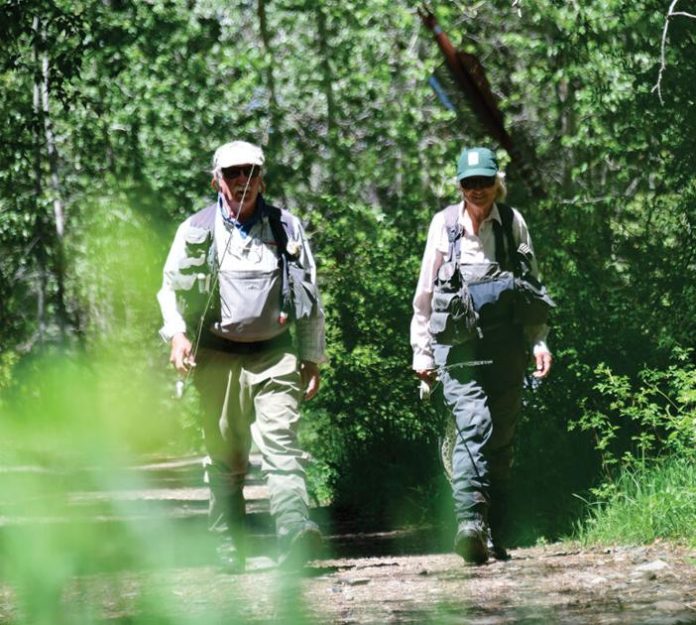Lost River Outfitters’ owner Scott Schnebly and fly-fishing guide manager Susanne Connor—longtime partners in life and business—were voted the valley’s top two local fishing guides in the 2021 Best of the Valley Contest.
At the start of fishing season last month, the couple sat down with the Express to discuss what goes into a successful guided fishing trip.
Q: How did you get into flyfishing?
Schnebly: I learned how to fish from my grandfathers when I was about four, growing up on a cattle ranch in Ellensburg, Wash. I started out catching grasshoppers and floating them down the stream. I bought my first fly rod when I was 12 with money I got from cutting thistles for 25 cents an hour along a ditch bank. It was a bamboo cane fly rod. My father used to tell all his friends that I could catch fish out of a bathtub, and I guess I’ve been trying to prove it ever since.
Connor: I started fishing after I came to the valley from Canada in 1978. I was flying glider planes out of Friedman Memorial Airport at the time, showing tourists around for a living. Scott used to come plow my parking lot in the winter, and I’d go buy waders from him. It was a small town back then and everyone know each other. In 1997, I asked him if he could hire me.
Schnebly: I remember the day she came in the store. I said, “Why did you wait so long?” Of course, I would hire her as a guide.
Q: What advice would you give to beginning fly anglers?
Schnebly: Over time, you start to make sense out of your successes. I’d say catalogue everything you’ve been through. If I have a hard time catching fish, I’ll think, “What does this remind me of? What did I do then?” and have my answer. Maybe the fly you used had a bit of orange on it, and rainbows just finished spawning, so they were looking for that dribbly egg floating down the river, and you realize that is why you caught that fish.
Connor: I think a lot of people jump in too fast and switch flies too soon. The best advice I would give is when you get to the river, just sit down and watch. People will come in and ask about fly forecasts and what fly to use—the reality is, you are the forecaster.
Schnebly: We can give general dates when fly hatches start, but it depends on many variables. A real avid fly guy or fly gal doesn’t go to the river to fish—they go to follow the hatches and watch the water temperature, air temperature, river flows, river level. This is going to be a tough summer with such a lack of water, unfortunately. We’ll need to do our best to save the resource.
Q: What do you hope people get out of your guide trips?
Connor: Some people are eager to just catch a fish or two and go home, but I think a half-day, four-hour trip is just not enough. Our business model is all-day adventure. We like to go to beautiful, wild places where there are lots of big fish and no people. Also, Scott and I have a huge garden, and we like to pack a nice lunch for everyone and bring produce to share. We also cook for our guests at our steelhead lodge in Stanley—that will reopen next summer.
Schnebly: What we try to do is create a nice atmosphere by the river and help our clients see the symphony of life going on around us. That you are part of it. I think there’s a lot of instant gratification going on today. Our view is broader. Guiding is not just about catching 25 fish! Someone might catch one fish that they’ll remember the rest of their life.
Connor: Many people who come into town from the East won’t know about water rights or how important water [conservation] is. Our trips are educational. I will take people to nice, deep pools, catch a lot of fish, and then show them the irrigation diversions where the river has dried up. I think people need to see that reality. Many are shocked and will say, “How is that even allowed to happen?”
Schnebly: As I learned from my grandfathers, if you don’t have water, you don’t have a ranch. As guides, we’re so dependent on the natural world; we can’t do what we do without it. The best thing we can do is help our clients become completely independent. And fly casting is applicable anywhere: saltwater, nonmoving water. Many people still come back wanting to learn more. That’s because the learning curve never goes flat—it’s what keeps us interested.
Credit: Source link































